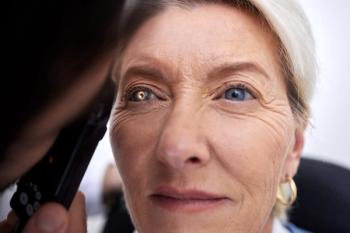
Pearls for detecting and managing keratoconus
Clark Chang, OD, MSA, MSc, FAAO, and Michelle Chung, OD, FAAO, FSLS, provided cornea updates during the American Academy of Optometry Academy 2025 conference.
Optometrists who are experts in detecting and managing keratoconus gathered at the 2025 annual meeting of the American Academy of Optometry in Boston to discuss their approaches.
Clark Chang, OD, MSA, MSc, FAAO, from Wills Eye Hospital, Cornea Service, in Philadelphia, Pennsylvania discussed fitting lens on irregular corneas in patients with keratoconus, which is one of the most common corneal diseases seen in real-world clinics.
He described the case of a woman with moderate keratoconus in the left eye and severe keratoconus with scarring in the right eye; she complained of seeing starbursts persistently. The patient was becoming intolerant of gas-permeable lenses and Chang opted for scleral lenses. He began by prescribing a traditional scleral lens, which resulted in improvement from 20/60 to 20/30 in the more severely affected eye and 20/20 in the left eye. Halos, the glare and starbursts improved but were still present. He then prescribed a pupil-constricting drop for use at night when most symptoms occurred, which provides partial improvement.
He then moved to a lens with higher order correcting optics for use in both eyes, which results in excellent visual acuity (20/20) in the right eye and 20/15 in the left eye. Chang sees this approach as something to offer patients in the future.
Michelle Chung, OD, FAAO, FSLS, who practices in Princeton, New Jersey, discussed the importance of early detection of keratoconus, noting that in many patients it progresses for years before diagnosis. “By recognizing the subtle signs of keratoconus, it can be differentiated from similar conditions and clinicians can make timely referrals for the FDA-approved cross-linking procedure, which helps to halt progression and preserve vision,” she stated.
She explained the importance of knowing if the patient has keratoconus or an imposter, because the right diagnosis drives everything that follows. “Some conditions need early treatment to prevent visual worsening, while others are stable and are managed differently to get the best vision possible,” she emphasized.
To reach a correct diagnosis, she emphasized that in her practice she does not rely on one test only to establish the diagnosis of keratoconus. Corneal tomography is her choice for most of her patients because it provides a detailed look at the front and back of the cornea. Other methods include topography, a retinoscope, autorefractor, and slit lamp. She also underscored the importance of a thorough patient history.
“The early signs to look for are the scissoring reflex, distorted mires, and clinically non-inflammatory corneal thinning, and any protrusions,” she said.
She advised that because keratoconus may begin with very subtle changes in the posterior cornea, tomography helps catch the early signs of the disease that other imaging methods may overlook.
Newsletter
Want more insights like this? Subscribe to Optometry Times and get clinical pearls and practice tips delivered straight to your inbox.




















































.png)


